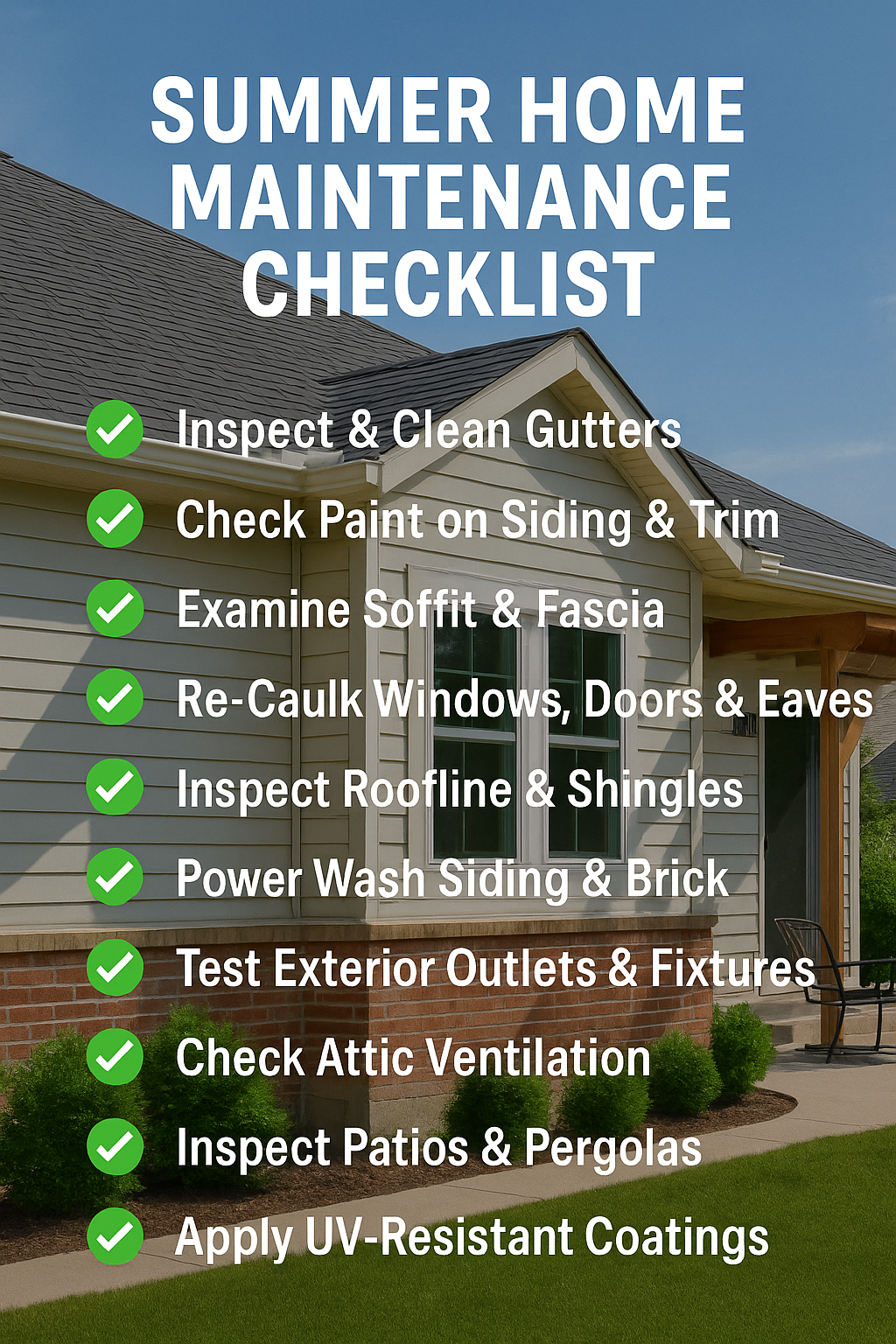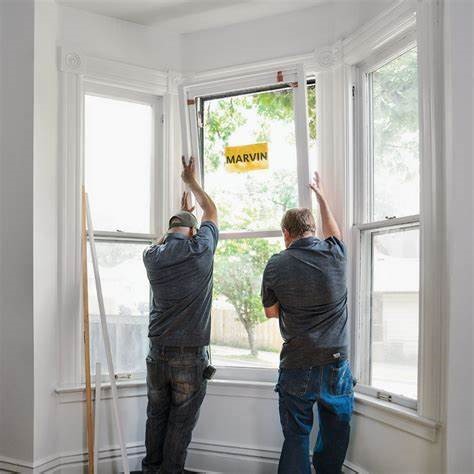Window Shopping: How to Choose the Best Window Materials for Your Home
Are you getting ready to embark on a much overdue home improvement project? Chances are, windows are on your priority list. Choosing your window materials may seem daunting, but it doesn't have to be. With the right knowledge and resources, you can easily select the best window materials for your budget and objectives. In this blog post, we will explore window shopping 101. We'll discuss the key factors to consider when selecting window material, including insulation, durability, and cost. Additionally, we'll review several popular window materials you'll want to keep on your radar.
Different Types of Window Materials
When considering what materials to choose for windows in your home, the range available on the market can be overwhelming. Window construction materials come down to two options: glass or one of many synthetic materials. Each type comes with its distinct advantages and disadvantages.
Glass windows provide a certain level of elegance and allow more light into the home, making it a popular choice among homeowners who are looking for bright, open spaces. However, this comes with drawbacks—it can attract more heat and cause energy bills to rise due to added insulation costs. Additionally, foreign objects like hail or debris may cause fear for those located in areas prone to bad weather.
Synthetic window materials, like vinyl or fiberglass frames, boast low-maintenance, low-cost and high energy efficiency benefits which make them ideal for homes in various climates. Typically, less expensive than traditional wood or glass windows, they also come in a variety of colors to match the exterior of any home. One potential downside is that they often appear artificial and fail to enhance the aesthetic of a home’s exterior design as much as glass would.
As you can imagine, deciding between different window materials can be an arduous task with so many factors at play. Hence why it's important to weigh up both sides before making any decisions. Being informed on all potential material options will help you make better decisions - which is why we've decided to delve into the basics of glass windows next.
- According to research from Energy.gov, windows with Low-E coatings, argon gas fillings, and insulated frames can decrease energy costs by around 7-15%.
- A study published in 2019 found that vinyl is the most popular choice for new window material because it is low-maintenance and cost-effective.
- Research from Energy.gov also found that triple glazed windows can reduce heat transfer by up to 50% compared to single glazed windows.
Introduction to Glass Windows
When it comes to choosing the best window materials for your home, glass windows are likely one of the first elements that come to mind. Glass does indeed offer great benefits – it’s aesthetically pleasing, creates transparency in the home environment, and helps bring natural light into space. In addition, with advanced technology, newer glass products are now also able to save energy and reduce outdoor noise levels.
On the other hand, there are some legitimate concerns when selecting glass windows for your household. For example, glass may not be as secure as other materials since it is inherently more fragile than other options and could be broken into or easily damaged due to extreme temperatures or blunt force. Furthermore, additional thin layers of glazing will increase costs and maintenance (e.g. cleaning) associated with glass windows may add up over time and can become expensive.
Ultimately, each type of window material has unique benefits – and drawbacks – depending on your needs and resources. Doing your research and exploring different options is key before committing to any material.
While deciding between all the available window materials might seem overwhelming at first glance, narrowing down the choices is quite doable – especially when you consider fiberglass and vinyl frames. With their respective strengths in providing insulation, durability, affordability, and lower maintenance requirements compared to other materials, these two popular options offer a great starting point in determining the best fit for your home's windows.
.
Choosing Between Fiberglass and Vinyl Frames
The introduction to glass windows made it clear that windows come in all shapes and sizes, with a wealth of materials available for selection. Of these materials, fiberglass and vinyl are some of the most popular for home window frames. Both offer their own sets of benefits and drawbacks, allowing homeowners to make the choice that best suits their needs, tastes, and budget.
Fiberglass window frames provide a greater level of durability and strength than vinyl, while also boasting excellent insulation properties. These frames are more resistant to changes in temperature and humidity over time. On the downside, fiberglass is much more expensive than vinyl. If you're looking for an energy-saving option, however, then it may be worthwhile considering the additional cost.
Vinyl window frames are much more economical compared to fiberglass, yet they don't offer much in terms of insulation or resistance to weather-related wear and tear. They do have one big perk — they’re low-maintenance since they never need to be scraped or repainted like wood frames do. That said, if your home is often exposed to extreme temperatures or wide temperature swings, then vinyl may not hold up as well as fiberglass will over the long run.
In conclusion, both fiberglass and vinyl frames provide home windows with different sets of advantages that must be weighed prior to making a final decision. If finance is a concern then vinyl is likely the best option; if strength, energy efficiency and longevity are important then fiberglass is likely the way to go. Whichever route you decide on, it's important to find quality materials that come with at least a two-year manufacturer's warranty so that you can feel confident about your decision before committing to it.
Benefits of Eco-Friendly Window Materials
The debate between fiberglass and vinyl frames has been a hotly contested one amongst contractors and homeowners alike. As far as eco-friendliness goes, both offer numerous environmental benefits that save money over time and help preserve our planet's resources. Fiberglass windows are made from renewable resources and their production process involves minimal waste, creating fewer carbon emissions in the air. Vinyl windows are also recyclable and contain no harmful VOCs, so they don’t damage the environment or your health.
Of course, not all vinyl windows are equally “green”: Look for ones with high-grade PVC frames that are free of lead and chlorine additives, making them more sustainable than those containing hazardous materials. Consider local manufacturers with low levels of energy used in production and transport, as those have less environmental impact than products which travel long distances to reach your home.
When it comes to selecting eco-friendly window materials for your home, both fiberglass and vinyl frames provide reliable options. While other factors such as price, durability and aesthetics obviously come into play when making this type of purchase decision, it pays to consider these green aspects when deciding what is best for your home – their long-term effect on your wallet and the planet at large could be well worth the extra effort.
These days, reducing our impact on the environment is becoming increasingly important. As such, looking for ways to lower your carbon footprint through the use of sustainable materials should be top priority when shopping for new windows.
Reduced Noise Levels
When choosing window materials for your home, you may consider the benefit of reduced noise levels. Eco-friendly materials are often seen as more sound resistant than traditional options as they are designed with specially engineered features such as multiple panes of glass and insulation drafts. This can help muffle outside noises and reduce the reverberation that can cause interior spaces to be echo chambers of sound. As the environment around us becomes increasingly populated, this can make a significant difference in our daily lives.
While eco-friendly windows materials may provide sound resistance characteristics, traditional options should not be completely discounted as there are certain configurations that may also provide effective noise reduction qualities. Windows with double seals are a great option and although they may lack some of the energy efficient capabilities compared to eco-friendly ones, they generally will offer superior soundproofing abilities.
In either case, it is important to select windows that correctly fit your desired noise reductions needs as well as aesthetically pleasing style for your home. Before selecting either eco-friendly or traditional window materials, thoroughly research the recommended specs and features based on your budget and requirements. By doing this you will be sure to find an ideal solution both aesthetically and practically to meet your desires and needs.
Considering both sound reduction performance, aesthetics and cost is essential when making a decision on what window material is best suited for your home. While each option has its benefits and drawbacks, being mindful of these factors will help ensure you pick the right solution for you and your home.
Safety Issues when Choosing Materials for Your Windows
When considering windows for your home, safety issues are paramount. After all, the last thing you want is a window that provides an easy entry point to an intruder. Certain window materials offer different levels of protection. While glass windows can be strengthened with thick panes or shatter-proof glazing, they still don't provide much security against break-ins. Metal frames, on the other hand, often come standard with locking mechanisms to prevent break-ins; however, metal can also reduce the aesthetic appeal of your home and raise the temperature during hot months due to conduction of heat from outside.
Wood windows are perhaps the most attractive security option as they offer customizable features such as double-or triple-paned glass and locks on both the window and frame. However, wood windows require more maintenance than other materials. They must be regularly treated in order to protect them against weathering and rot and must be inspected for any signs of insect infestation or decay regularly. Nonetheless, wooden windows remain popular because of their traditional look and quality construction which makes them durable over the long term.
Ultimately, when it comes to choosing the right material for your windows, there are many factors to consider—including noise levels reduction and safety measures—in order to ensure that they suit your needs best while also enhancing the aesthetics of your home. While it can be challenging to balance these oftentimes conflicting priorities, doing so will help you make an informed decision when it comes time to decide on the right material for your windows.
Budget Considerations and Maintenance Requirements
Budget considerations and maintenance requirements are just as important factors to consider when choosing window materials for your home as safety issues. Depending on the type of window material you choose, you can save or spend a considerable amount of money upfront, or over the long term.
For example, most aluminum frames are less expensive than wood frames, but can require more frequent maintenance due to their propensity to expand and contract with extreme temperature changes, which can damage the window's seals. On the other hand, high-end windows crafted from special composite materials or metal may be more costly at first, but they are virtually maintenance free, reducing total lifetime costs.
When weighing budget considerations, also be sure to factor in warranties offered by each manufacturer. Many offer extensive coverage that can help reduce long-term costs in case of a manufacturer defect.
Once you have determined which type of window best meets your safety and budgetary needs, you can then decide if paying for additional features such as energy-efficient coatings and specialty glass types is worth the added cost in order to make your home more comfortable and attractive. Doing so will provide an even greater return on investment through lower utility bills and increased property value in most cases.
With these financial elements considered alongside other important factors such as style and environmental impact, you will be well equipped to find the perfect windows for your home that will look great while providing security and comfort both financially and physically.
Factors to Consider When Choosing the Best Window Material for Your Home
When selecting the best window material for your home, there are several factors to consider, including budget considerations and maintenance requirements, as well as energy efficiency, durability, and aesthetics. By taking a multi-faceted approach to window shopping and weighing all of these factors, you can be confident in your final purchase decision.
Budget is of course a major factor when deciding on window materials. If a homeowner is primarily concerned with keeping costs low, then vinyl windows may be the best choice since they are usually the least expensive option. However, if money is not an issue, then wood or aluminum windows might be better suited since they offer higher levels of insulation and strength.
Installation cost should also be included in the budget discussions. Windows that are purchased pre-made are often the least expensive to install compared to custom made options. However, those that require custom installation will offer more flexibility when it comes to size, shape, and design - something that should not be overlooked if budget isn't a primary concern.
Maintenance requirements should be factored into the purchasing decision as well. Wood windows, despite how beautiful they look, require more upkeep than their alloy counterparts due to potential weathering problems like cracking and warping from repeatedly being exposed to extreme temperatures or moisture. Vinyl windows typically only need light cleaning and rarely need repairs over their service life, so they offer easy maintenance options that won't break your budget or take up much time.
Energy efficiency is another important factor when choosing the right window material for your home. Wood and aluminum frames have varying degrees of thermal protection since their construction varies but usually provide adequate insulation against temperature loss year round; however, wood frames tend to handle varying climates better than aluminum because they naturally expand and contract more efficiently than metal frames over time. Vinyl tends to offer the most energy efficient performance due to its ability to trap heat during cooler months and reflect outside heat back during warm days - making them ideal for warm climates or households that value energy conservation.
Finally, aesthetics play a role too because how you feel about how your windows appear can make or break the overall décor of a room or even the entire home's exterior design plan. Wood is widely considered to be the most attractive material followed by vinyl due to its texture and color flexibility; however what works for one individual may not appeal to another so experimenting with samples at different retailers can help narrow down preferences before making any final decisions.
By considering these five factors: budget considerations and maintenance requirements, energy efficiency, durability, and aesthetics - homeowners can make well informed decisions that allow them to find windows that fit both their individual needs and budgetary restraints while also complimenting their homes existing décor scheme at a reasonable price point.
Common Questions
What are the long-term costs associated with different window materials?
The long-term costs associated with different window materials can vary significantly depending on the type of material chosen. Generally, vinyl windows have some of the lowest long-term costs due to their affordability and low maintenance requirements. Wood windows tend to have higher costs due to their need for regular painting and staining, as well as potential rot or insect damage. Aluminum windows also have higher long-term costs due to their potential to corrode or require more frequent sealant checks. Ultimately, when considering long-term costs, it is important to factor in the cost of labor and maintenance for any type of window material.
What are the different types of window materials and their benefits?
Window materials can range from wood, aluminum and vinyl.
Wood is a timeless classic, providing lasting value and minimal upkeep costs. It offers fantastic energy efficiency, durability and comfort as well as natural beauty. Wood windows also come in many different styles to complement your home’s aesthetic.
Aluminum is an economically sound choice. It has an excellent strength-to-weight ratio, requires minimal maintenance and it is easily customized. The color will never fade or chip away like paints often do with time. Aluminum frames offer slim profiles and typically come with a few finishes so they match any home decor style.
Vinyl can offer great insulation, making it one of the most energy efficient window materials available. Vinyl's resilience means that it won’t warp or dent, which makes this type of material perfect for high-traffic areas in the home. As a slightly more cost-effective material than wood or aluminum, vinyl can be great for those looking for budget friendly options.
What are the most popular window materials?
The most popular window materials are vinyl, wood, aluminum, and fiberglass. Vinyl windows are the most cost-effective option and come in a variety of colors and styles. They also require less maintenance. Wood frames provide an elegant look and can be painted or stained to match any decor. Aluminum windows are durable and ideal for high traffic areas. Lastly, fiberglass windows have excellent energy efficiency and come in many shapes and sizes. All these materials offer value, but ultimately your choice will depend on your needs, budget, and preferences.
Subscribe to JP Exteriors's Blog








Comments